Intro
Discover 5 ways vegans get protein from plant-based sources, including legumes, nuts, and seeds, to maintain a balanced vegan diet and support overall health and wellness with protein-rich foods.
Veganism has become increasingly popular over the past few years, with many people adopting a plant-based lifestyle for its numerous health and environmental benefits. One of the most common concerns about veganism is the perceived lack of protein in a plant-based diet. However, this couldn't be further from the truth. With a little creativity and knowledge, it's easy to get all the protein you need from plant-based sources. In this article, we'll explore the importance of protein, the benefits of a vegan lifestyle, and provide five ways vegans can get protein.
Protein is an essential nutrient that plays a critical role in many bodily functions, including building and repairing tissues, producing enzymes and hormones, and maintaining a healthy immune system. The recommended daily intake of protein varies based on factors such as age, sex, weight, and activity level, but most adults need around 0.8-1 gram of protein per kilogram of body weight per day. For example, a 150-pound person would need around 55-60 grams of protein per day. Fortunately, there are many plant-based sources of protein that can help vegans meet their daily protein needs.
A well-planned vegan diet can provide numerous health benefits, including reduced risk of heart disease, type 2 diabetes, and certain types of cancer. Veganism can also have a positive impact on the environment, as animal agriculture is a significant contributor to greenhouse gas emissions and deforestation. With a little planning and creativity, it's easy to get all the protein you need from plant-based sources. In the following sections, we'll explore five ways vegans can get protein, including legumes, whole grains, nuts and seeds, soy products, and meat alternatives.
Introduction to Vegan Protein Sources
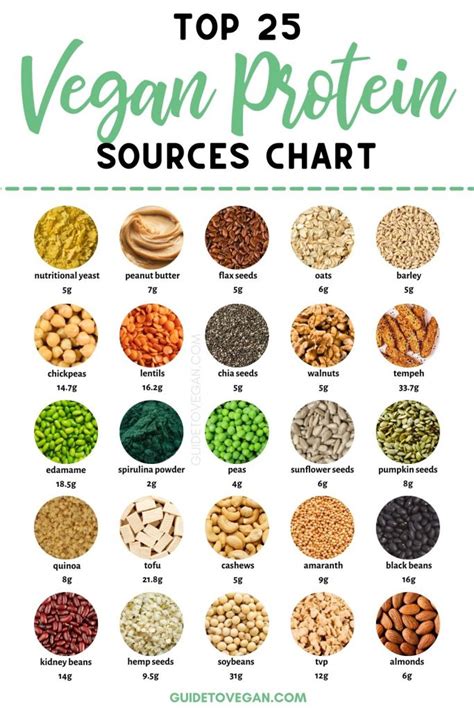
Benefits of Plant-Based Protein
Plant-based protein sources have numerous benefits, including reduced risk of chronic diseases, improved gut health, and increased satiety. Plant-based protein sources tend to be high in fiber, vitamins, and minerals, and low in saturated fat and cholesterol. They also tend to be more environmentally friendly, as animal agriculture is a significant contributor to greenhouse gas emissions and deforestation. Some of the benefits of plant-based protein sources include:- Reduced risk of heart disease and stroke
- Improved blood sugar control and reduced risk of type 2 diabetes
- Increased satiety and weight loss
- Improved gut health and reduced risk of certain types of cancer
- Environmentally friendly and sustainable
Legumes as a Protein Source

Legumes are versatile and can be incorporated into a variety of meals, including soups, stews, salads, and stir-fries. They are also rich in fiber, vitamins, and minerals, and have been shown to have numerous health benefits, including reduced risk of heart disease and type 2 diabetes.
Preparing Legumes
Legumes can be prepared in a variety of ways, including cooking, roasting, and sprouting. Cooking legumes can be as simple as boiling them in water or broth, or as complex as making a hearty stew or curry. Roasting legumes can bring out their natural sweetness and add texture and flavor to salads and side dishes. Sprouting legumes can increase their nutritional value and make them easier to digest.Whole Grains as a Protein Source
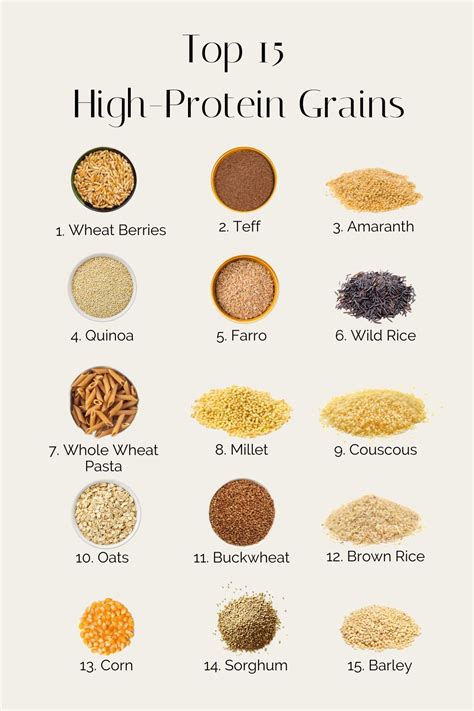
Whole grains can be incorporated into a variety of meals, including salads, stir-fries, and side dishes. They are also rich in fiber, vitamins, and minerals, and have been shown to have numerous health benefits, including reduced risk of heart disease and type 2 diabetes.
Benefits of Whole Grains
Whole grains have numerous benefits, including reduced risk of chronic diseases, improved gut health, and increased satiety. They are also high in fiber, vitamins, and minerals, and low in fat and calories. Some of the benefits of whole grains include: * Reduced risk of heart disease and stroke * Improved blood sugar control and reduced risk of type 2 diabetes * Increased satiety and weight loss * Improved gut health and reduced risk of certain types of cancer * Environmentally friendly and sustainableNuts and Seeds as a Protein Source
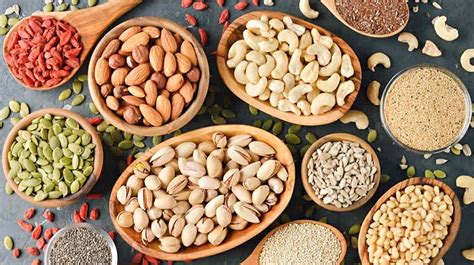
Nuts and seeds are versatile and can be used in a variety of ways, including as a snack, added to salads, or used as a topping for oatmeal or yogurt. They are also rich in healthy fats, fiber, and antioxidants, and have been shown to have numerous health benefits, including reduced risk of heart disease and type 2 diabetes.
Preparing Nuts and Seeds
Nuts and seeds can be prepared in a variety of ways, including roasting, soaking, and sprouting. Roasting nuts and seeds can bring out their natural flavor and add texture and crunch to salads and side dishes. Soaking nuts and seeds can make them easier to digest and increase their nutritional value. Sprouting nuts and seeds can increase their nutritional value and make them easier to digest.Soy Products as a Protein Source
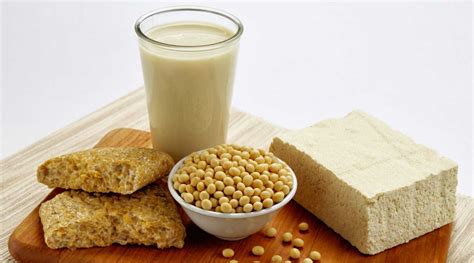
Soy products are versatile and can be used in a variety of ways, including as a meat substitute, added to salads, or used as a topping for oatmeal or yogurt. They are also rich in fiber, vitamins, and minerals, and have been shown to have numerous health benefits, including reduced risk of heart disease and type 2 diabetes.
Benefits of Soy Products
Soy products have numerous benefits, including reduced risk of chronic diseases, improved gut health, and increased satiety. They are also high in fiber, vitamins, and minerals, and low in fat and calories. Some of the benefits of soy products include: * Reduced risk of heart disease and stroke * Improved blood sugar control and reduced risk of type 2 diabetes * Increased satiety and weight loss * Improved gut health and reduced risk of certain types of cancer * Environmentally friendly and sustainableMeat Alternatives as a Protein Source
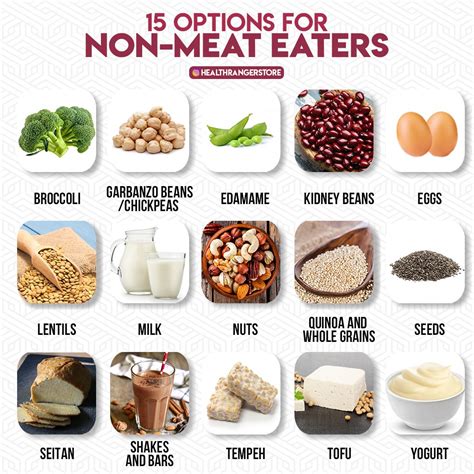
Meat alternatives are versatile and can be used in a variety of ways, including as a meat substitute, added to salads, or used as a topping for oatmeal or yogurt. They are also rich in fiber, vitamins, and minerals, and have been shown to have numerous health benefits, including reduced risk of heart disease and type 2 diabetes.
Preparing Meat Alternatives
Meat alternatives can be prepared in a variety of ways, including grilling, baking, and sautéing. Grilling meat alternatives can add texture and flavor, while baking can help retain moisture and nutrients. Sautéing meat alternatives can add flavor and texture, and can be used in a variety of dishes, including stir-fries and curries.What are some high-protein foods for vegans?
+Some high-protein foods for vegans include legumes, whole grains, nuts and seeds, soy products, and meat alternatives. Examples include lentils, chickpeas, black beans, quinoa, brown rice, almonds, chia seeds, hemp seeds, tofu, tempeh, and veggie burgers.
How much protein do vegans need per day?
+The recommended daily intake of protein varies based on factors such as age, sex, weight, and activity level, but most adults need around 0.8-1 gram of protein per kilogram of body weight per day. For example, a 150-pound person would need around 55-60 grams of protein per day.
Can vegans get enough protein from plant-based sources?
+Yes, vegans can get enough protein from plant-based sources. With a little creativity and knowledge, it's easy to get all the protein you need from legumes, whole grains, nuts and seeds, soy products, and meat alternatives. It's also important to eat a variety of foods and to consult with a healthcare professional or registered dietitian for personalized nutrition advice.
In conclusion, getting enough protein as a vegan is easy and delicious. With a little creativity and knowledge, it's possible to get all the protein you need from plant-based sources. Whether you're a seasoned vegan or just starting out, incorporating legumes, whole grains, nuts and seeds, soy products, and meat alternatives into your diet can provide numerous health benefits and help you meet your daily protein needs. We hope this article has provided you with the information and inspiration you need to start exploring the world of vegan protein sources. Don't forget to comment below and share your favorite vegan protein sources with us!
